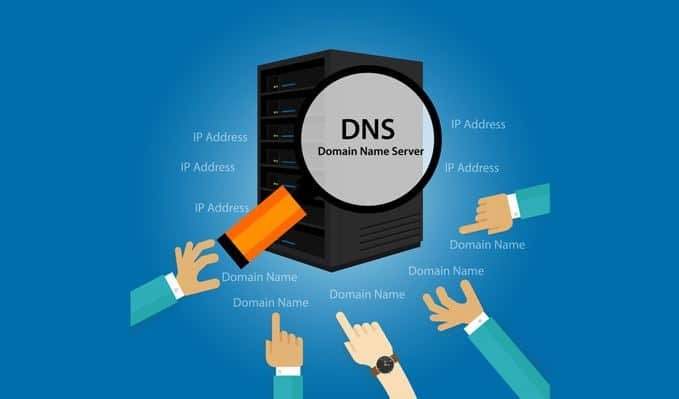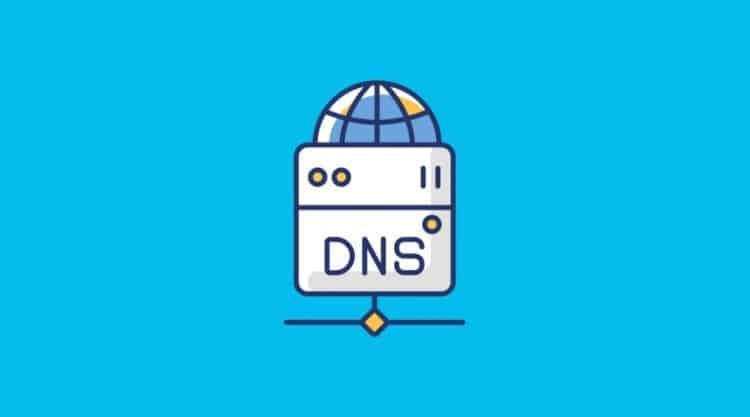It is the keystone of the Internet. The DNS server acts as an intermediary between a device and a website. While it significantly changes the daily life of Internet users, it can sometimes present some risks. Discover the role of DNS, its advantages, and disadvantages. Learn how to configure it according to your computer, smartphone, or tablet.
What is a DNS server?
The term DNS stands for Domain Name System. The DNS server is the link between a domain name and the IP address of a server connected to the Internet. In other words, its role is to translate a human-understandable address into a digital IP address that can be used by computers and networks.
Designed to make everyday life easier for Internet users, the DNS server can be compared to a computer directory. Without it, it would be necessary to know the IP address of all the servers for each new connection. This is the reason why humans use domain names, which are easier to remember than numbers.
Each time an address is entered in a web browser, the device will search for information in a system of DNS servers connected to the Internet to obtain an IP address corresponding to that domain name. As soon as the HTTP request is sent to the DNS server, it is then possible to access the website.
DNS servers have an impact on our use of the Internet. If they run transparently in the background, sometimes they do not respond due to a network failure. This can cause major computer crashes on heavily trafficked sites like Facebook and Twitter. You can solve these problems by changing your internet browser, modifying the firewall settings, restarting your router, or configuring a new DNS server.
What are the risks associated with DNS servers?
DNS servers have weaknesses and vulnerabilities that make them prime targets for cyber attacks. Here are the main major risks:
Browsing data can be spied on
Each time an Internet user creates an online profile, he enters several personal information such as his name, email address, and telephone number. DNS servers can aggregate this data with other data. If hackers manage to gain control of a computer, they can search for mail and name servers associated with internal IP addresses. If they perform a DNS zone transfer attack, they will be able to gather more information about the zones in their domain.
Request information can be intercepted
DNS servers collect every URL typed in a browser’s address bar. It is also possible that they direct the Internet user to a page of their choice if the URL is incorrect. Request information flows from internal workstations to external servers.
There is a flaw in this path that hackers can exploit. By placing themselves between the Internet user and the external server, they can intercept important data without him realizing it. The most well-known form of cyberattack is the Man in the Middle.
Internet users can be redirected to fraudulent sites
Hackers can manipulate unauthorized DNS caches through DNS server “poisoning”. There are several types of cyber attacks that trick computers into sending them in the wrong direction.
DNS Spoofing redirects Internet users to fraudulent sites to steal personal information. DNS Cache Poisoning lures DNS servers into sending them a valid bogus response to a query. This cyberattack is used to phish and send the user to a malicious site containing viruses.
Part of the web may be censored
Depending on the country, DNS server providers may have to remove certain addresses from their registry, causing part of the web to be censored.
It is possible to legally bypass Internet censorship by changing its DNS servers and opting for one that is respectful of the Internet user. Examples of fast and secure DNS servers are Cloudflare, Quad9, OpenDNS, and Google Public DNS.
How to change DNS server?
The default DNS servers are those of the Internet service provider, also known as the ISP. It is not mandatory to use these and it is possible to replace them with a third party like Cloudflare, Quad9, and Google DNS.
Changing the DNS server offers several advantages such as avoiding a form of censorship, obtaining faster DNS resolution, protecting against hacking, or even enjoying better performance. Find out how to change the DNS server on your computers, smartphones, and tablets.
Change DNS server on Windows
If you are still on Windows 10, you just have to go to the settings by right-clicking on the Windows logo. You must then select the Network and Internet menu and then access the Network and Sharing Center. You will then find the list of available connections. Right-click on the one that interests you then access its properties.
To configure your new DNS, you must select either Internet Protocol version 4 or IPv4, Internet Protocol version 6, or IPv6. Then access its properties by right-clicking and activate the option “Use the following DNS server address”. All you have to do is fill in this box and confirm with the ” OK ” button.
Change DNS server on macOS
Mac enjoys a DNS network configuration even simpler than on PC. To get started, you need to click on the Apple logo and then select System Preferences. Then click on the Network icon. If you can’t spot it, you can still find it with the search bar.
You must now click on the Advanced button then on the DNS tab to have access to the list of DNS servers. By clicking on the More button, you will be able to activate the entry bar for IPv4 or IPv6 server addresses. Don’t forget to save the transaction by clicking on the Save button.
Change DNS server on Android
If you have an Android smartphone or tablet, you can change their DNS server if they are connected to a WLAN network. To get started, click on the Settings or Settings icon on your device. Then select the Network and Internet item and identify the wireless connection for which you want to change the DNS server.
By keeping it pressed, you will be able to click on the Change network option and access advanced preferences. Change the IP Settings with the Static option. You can now enter the address of the new DNS server by modifying the DNS 1 and DNS 2 items. Conclude by clicking on the Save button.
Change DNS server on iOS
If you have an iPhone or iPad, configuring the new DNS server will be as easy as on an Android smartphone or tablet. First, open the settings of your Apple device. Now click on the Wi-Fi button and find the network you want to change. You must then click on the “i” button to access the advanced settings.
Select the Configure DNS option and set it to Manual mode. You can now delete the current DNS servers by clicking the red Minus button and add a new one by clicking the green Plus button. Finalize the operation by clicking on the Save button.


